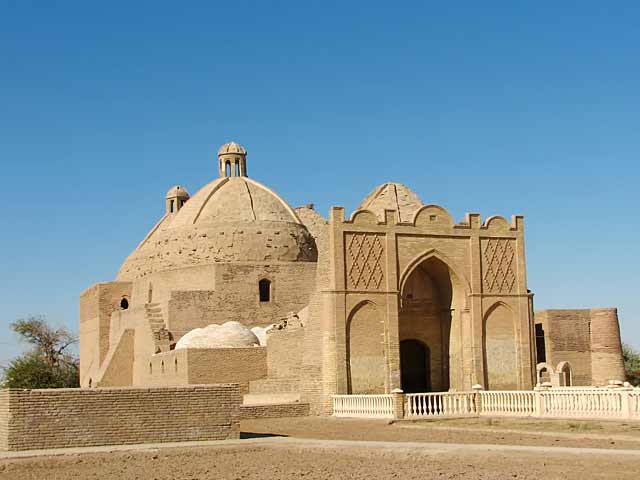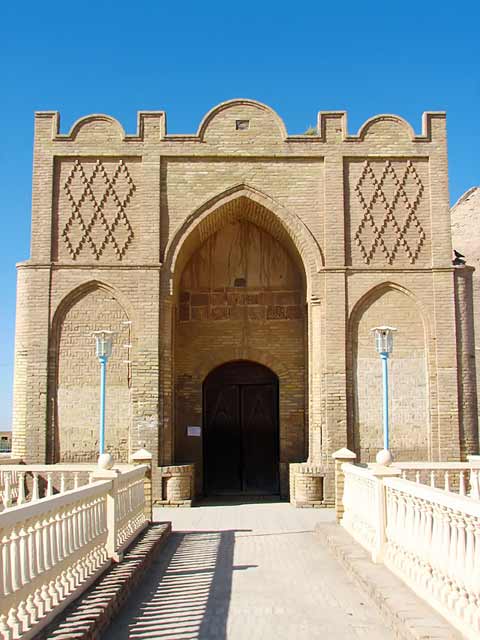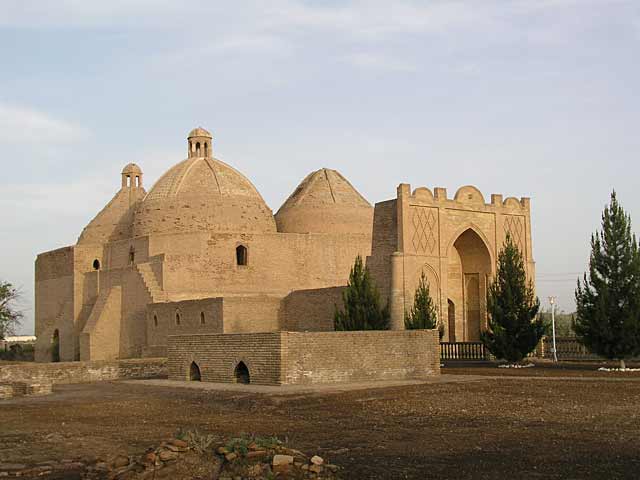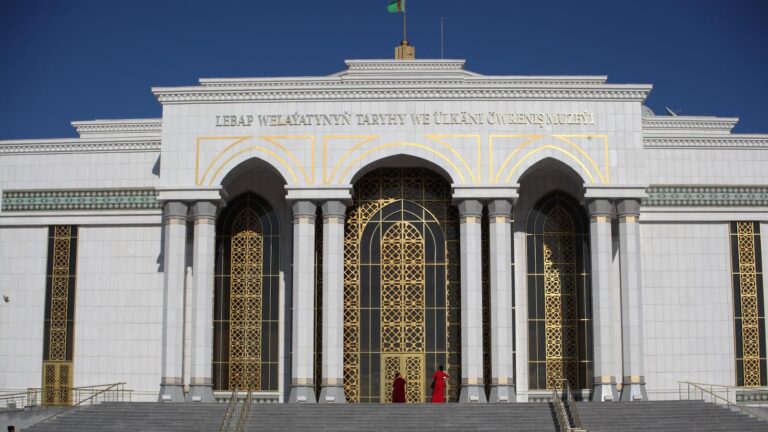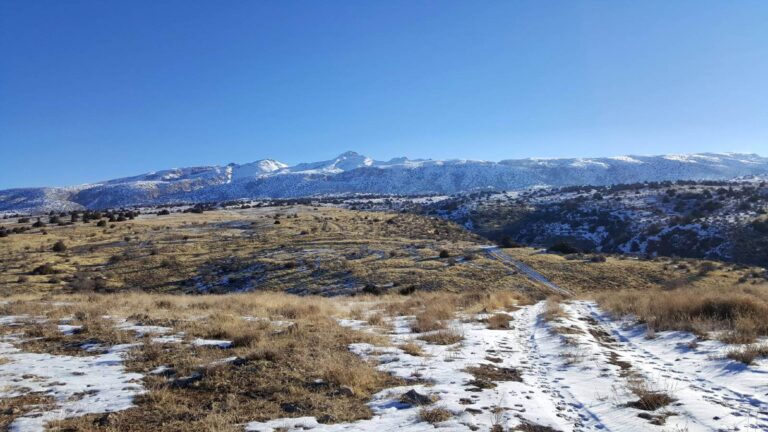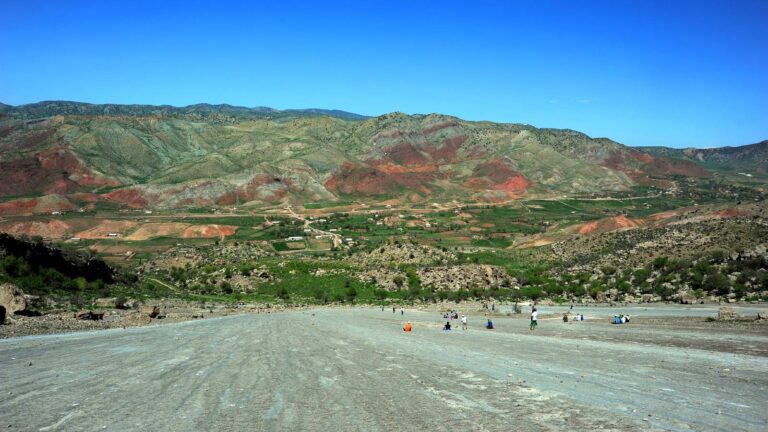Getting There
Astana-baba Mausoleum is located 12 km northwest of the modern city of Kerki.
What to Expect
This architectural site consists of open and closed corridors, as well as northern corridors, an open courtyard, a peshtag, a hall with four columns and nine domes, a mosque, a mausoleum of Zeid Ali and Zubeid Ali, Divankhani, and a mausoleum of Gyzlarbibi.
The architecture of the complex of the mausoleums of Zeid Ali and Zubeid Ali, Gyzlarbibi, characterized by the laying of bricks of various sizes, as well as considering the types of decorative patterns, one can see that these monuments belong to subsequent centuries. A hall with four columns and nine domes, a closed corridor were erected in the 17th-19th centuries, at the beginning of the 20th century – a portal entrance, as evidenced by the bricks used in the construction, typical of subsequent times.
History
The Astana-baba architectural complex, located in Lebap velayat, began to form in the XII century. Its earliest part, a mosque, was built when this region was part of the Turkmen-Oguz state, headed by the Great Seljuk dynasty.
Many legends related to this monument have come down to us, passing from mouth to mouth, from generation to generation. According to one the ruler of Balkh, Ibn Ali Nur oglu, married his only daughter Zubeid to the ruler of the people of Kerki-Chardzhou (present-day Atamurad-Turkmenabad). She dies shortly after her marriage. The saddened father decided to build a beautiful mausoleum at the tombstone of his beloved daughter. He ordered to build a wonderful building to everyone’s surprise and invited famous masters from Merv, Samarkand.
However, upon completion of construction, the building collapsed overnight. This was repeated three times. Nur oglu fell into despair, but in a dream an old man appeared to him and advised him to build a mausoleum, mixing soil and water brought from Mecca. The father, inconsolable after the death of his daughter, did just that. The earth brought from Mecca was mixed with clay, and the water from Mecca was poured into a well, from where it was taken for construction. Thus, the construction of the mausoleum was completed, and after Nur oglu’s death, he was also buried next to his daughter.

